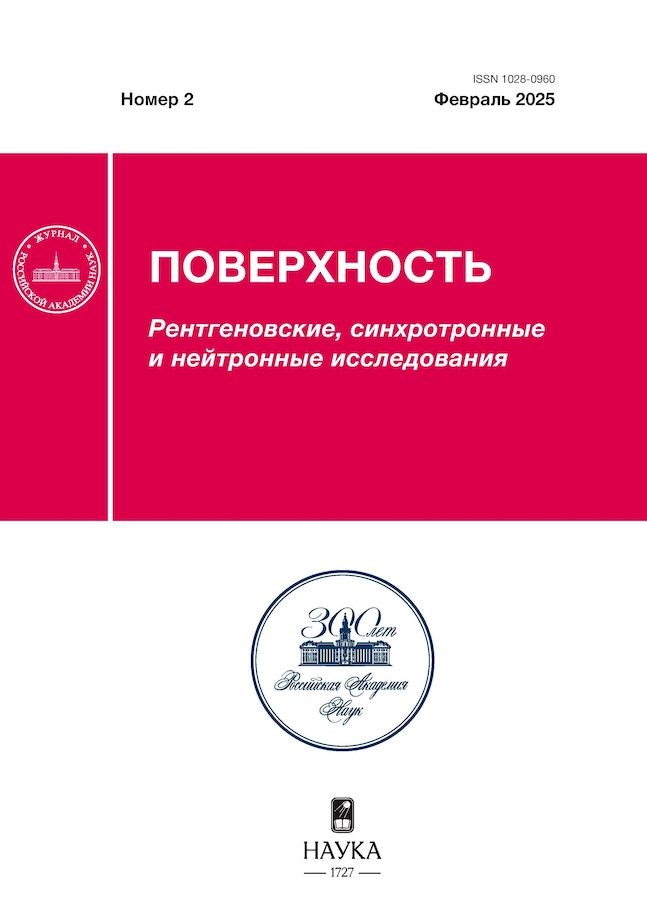Electrostatic Discharges During the Joint Impact of Electrons and Electromagnetic Radiation on Glass K-208
- Autores: Khasanshin R.K.1,2, Novikov L.S.3, Uvarov D.V.1
-
Afiliações:
- Kompozit JSC
- Bauman Moscow State Technical University
- Lomonosov Moscow State University
- Edição: Nº 2 (2025)
- Páginas: 53-59
- Seção: Articles
- URL: https://permmedjournal.ru/1028-0960/article/view/686788
- DOI: https://doi.org/10.31857/S1028096025020073
- EDN: https://elibrary.ru/EHJHPZ
- ID: 686788
Citar
Texto integral
Resumo
Electrostatic discharges and radiation-stimulated leakage currents were studied under separate and combined action of 10–40 keV electrons and solar electromagnetic radiation on K-208 glass samples used as cover glass for solar batteries and reflective elements for spacecraft thermal radiators. The values of the electron flux density (φ) were changed in the range of (5 × 108–1 × 1011) cm–2 · s–1, the electromagnetic radiation flux corresponded to one equivalent of solar illumination. Irradiation was carried out in a vacuum of 10–4 Pa. During irradiation, two types of discharges were observed: the first type is a discharge from a cone-shaped microprotrusion on the glass surface into the surrounding ionized medium; the second type of discharge developed along the irradiated surface leaving about 100 nm wide and up to 2 nm deep discharge channels on it. Discharges of both types were accompanied by plasma emissions and generation of electromagnetic pulses. The dependences of the discharge frequency and leakage currents on the parameter φ for electron and combined irradiation were obtained. It was found that for fixed electron energy, discharges of the second type on the samples surface in the case of combined irradiation occur at a lower φ value than in the case of electron irradiation. It was also found that with combined action the share of breakdowns of cover glass samples on the conductive substrate in the events recorded in the experiments increases significantly. The share of breakdowns of glass samples also increases with increasing energy of the impacting electrons.
Texto integral
Sobre autores
R. Khasanshin
Kompozit JSC; Bauman Moscow State Technical University
Autor responsável pela correspondência
Email: rhkhas@mail.ru
Rússia, Korolyov; Moscow
L. Novikov
Lomonosov Moscow State University
Email: rhkhas@mail.ru
Rússia, Moscow
D. Uvarov
Kompozit JSC
Email: rhkhas@mail.ru
Rússia, Korolyov
Bibliografia
- Norris C.B., Eernisse E.P. // J. Appl. Phys. 1974. V. 45. Iss. 9. P. 3876. https://doi.org/10.1063/1.1663878
- Primak W., Kampwirt R. // J. Appl. Phys. 1968. V. 39. Iss. 12. P. 5651. https://doi.org/10.1063/1.1656029
- Gavenda T., Gedeon O., Jurek K. // Nucl. Instrum. Methods Phys. Res. B. 2014 V. 322. P. 7. https://doi.org/10.1016/j.nimb.2013.12.017
- Ollier N., Boizot B., Reynard B., Ghaleb D., Petite G. // J. Nucl. Mater. 2005. V. 340. P. 209.
- Boizot B., Petite G., Ghaleb D., Pellerin N., Fayon F., Reynard B., Calas G. // Nucl. Instrum. Methods Phys. Res. B. 2000. V. 166. P. 500.
- Chen L., Wang T.S., Zhang G.F., Yang K.J., Peng H.B., Zhang L.M. // Chin. Phys. B. 2013. V. 22. P. 126101.
- Хасаншин Р.Х., Новиков Л.С., Применко Д.А. // Поверхность. Рентген., синхротр. и нейтрон. исслед. 2020. № 9. С. 47. https://doi.org/10.31857/S1028096020090113
- Хасаншин Р.Х., Новиков Л.С., Коровин С.Б. // Поверхность. Рентген., синхротр. и нейтрон. исслед. 2017. № 9. С. 28. https://doi.org/10.7868/S0207352817090049
- Ferguson D.C., Wimberly S.C. The Best GEO Daytime Spacecraft Charging Index. // Proc. 50th AIAA Aerospace Sci. Mtg, Dallas, Texas. 2013. P. AIAA 2013-0810. https://doi.org/10.2514/6.2013-810
- Messenger S.R., Wong F., Hoang B., Cress C.D., Walters R.J., Kleuver C.A., Jones G. // IEEE Trans. Nucl. Sci. 2014. V. 61. № 6. P. 3348. https://doi.org/10.1109/TNS.2014.2364894
- Toyoda K., Okumura T., Hosoda S., Cho M. // J. Spacecraft Rockets. 2005. V. 42. № 5. P. 947. https://doi.org/https://doi.org/10.2514/1.11602
- Liu Y., Feng W., Wang S., Huang J., Tang X., Wang Zh. GEO Spacecraft potential estimation in worst-case environment by SPIS. // Proc. 14th Spacecraft Charging Technology Conference, ESA/ESTEC, Noordwijk, NL. 2016.
- Модель космоса. Вып. 8. Т. 2. / Ред. Новиков Л.С. М.: Изд. МГУ, 2007.
- Zhang G.F., Wang T.S., Yang K.J., Chen L., Zhang L.M., Peng H.B, Yuan W., Tian, F. // Nucl. Instr. Methods Phys. Res. B. 2013. V. 316. P. 218. https://doi.org/10.1016/j.nimb
- Boizot B., Petite G., Ghaleb D., Reynard B., Calas G. // J. Non-Cryst. Solids. 1999. V. 243. P. 268.
- Boizot B., Petite G., Ghaleb D., Calas G. // J. Non-Cryst. Solids. 2001. V. 283. P. 179.
- Sun K., Wang L.M., Ewing R.C., Weber W.J. // Philos. Mag. 2005. V. 85. P. 597.
- Chen L., Wang T.S., Zhang G.F., Yang K.J., Peng H.B., Zhang L.M. // Chinese. Phys. B. 2013. V. 22. P. 126101.
- Masui H., Toyoda K., Cho M. // IEEE Trans. Plasma Sci. 2008. V. 36. P. 2387. https://doi.org/10.1109/TPS.2008.2003191
- Khasanshin R.H., Novikov L.S. // IEEE Trans. Plasma Sci. 2019. V: 47. № 8. P. 3796. https://doi.org/10.1109/TPS.2019.2916210
- Ferguson D.C., Katz I. // IEEE Trans. Plasma Sci. 2015. V. 43. № 9. P. 3021. https://doi.org/10.1109/TPS.2015.2432718
- Cho M., Kawakita S., Nakamura M., Takahashi M., Sato T., Nozaki Y. // J. Spacecraft Rockets. 2005. V. 42. № 4. P. 740. https://doi.org/10.2514/1.6694
- Khasanshin R.H., Novikov L.S. // Adv. Space Res. 2016. V. 57. P. 2187. http://dx.doi.org/10.1016/j.asr.2016.02.23
- Purvis C., Garrett H.B., Whittlesey A.C., Stevens N.J. // NASA Tech. 1984. P. 2361.
- Свечкин В.П., Савельев А.А., Соколова С.П., Бороздина О.В. // Космич. техника и технология. 2017. № 2. С. 99.
- Хасаншин Р.Х., Новиков Л.С. // Перспективные материалы. 2023. № 1. С. 19. https://doi.org/10.30791/1028-978X-2023-1-19-27
- Хасаншин Р.Х., Уваров Д.В. // Известия РАН: Сер. физ. 2024. Т. 88. № 4. C. 454.
Arquivos suplementares














